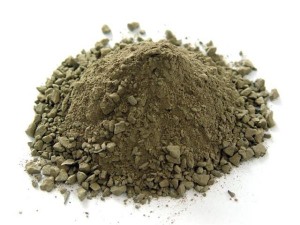Introduction to the construction method of ramming material
Ramming materials include clay, high alumina, carbon, magnesia and dolomite ramming materials.
In the construction of high alumina ramming material and clay ramming material, the coarse and fine aggregates should be mixed with high alumina cement binder for 2 minutes, and then a certain amount of water should be added for mixing for 5 minutes. The thickness of the material is 80-100mm in one construction, and it is rammed with a pneumatic hammer. The number of times it reaches the bulk density stops.
The carbonaceous ramming material is constructed by cold ramming or hot ramming. Cold ramming is more convenient than hot ramming, and cold ramming is generally put into use directly. The ramming material must be broken first during hot ramming, and the heating temperature is based on the mixing temperature of the finished product. It depends. When heated until there are no hard lumps, when the ramming hammer head is heated to 70 degrees Celsius and turns dark brown, then ramming in layers, the thickness of each layer cannot exceed 100mm. When ramming, press half a hammer with one hammer and ram it back and forth several times. Check for compactness or compaction. The compaction ratio is 40-45 percent. Before ramming the next layer of ramming material, roughen the surface of the upper layer. Make the upper base layer tightly combined.
Before the magnesia ramming material is constructed, the coal tar should be heated to 130 degrees Celsius for dehydration, and the magnesia sand and iron oxide powder should be heated to 110 degrees Celsius for drying. The magnesia ramming material is mostly used in converters, electric furnaces, flash furnaces, and reverberatory furnaces. Bottom of the furnace.
The magnesia ramming material should be heated and dried on the surface of the wet brick masonry after the refractory brick masonry is finished. Then carry out ramming. When ramming, pour the mixed ramming material into layers. The thickness of each layer is 70-80mm, the compression ratio is 50%, and the ramming is carried out from the center of the furnace to 4 weeks. Avoid oily Squeeze to the center to form a spring body. The wind pressure during ramming should not be less than 0.5Mpa.

Related News
- Introduction of construction method of ramming material in intermediate frequency furnace
- How to choose the material of furnace lining
- The difference between rammer and castable
- Application direction of intermediate frequency furnace refining
- Introduction to the construction method of dry ramming material
- Do you know the production process and control points of breathable bricks?
- The application of argon blowing technology at the bottom of the intermediate frequency furnace
- Method for prolonging service life of intermediate frequency furnace lining
- In addition to diffused breathable bricks, there are those types of breathable bricks
- What are the advantages of coil cement
- How to choose the type of intermediate frequency furnace ramming material?
- Classification of intermediate frequency furnace charges
- What are the types of intermediate frequency furnace lining materials?
- What is the effect of the ingredients of the intermediate frequency furnace lining material on the application?
- What are the aspects of reducing energy consumption of breathable bricks?
- What are the requirements for manufacturing materials of breathable bricks?
- What are the material requirements for the production process of breathable bricks?
- What material is used for the lining of the intermediate frequency furnace? What are the common types?
- How to choose the type of intermediate frequency furnace ramming material?
- What are the key points for the selection of intermediate frequency furnace lining materials?


